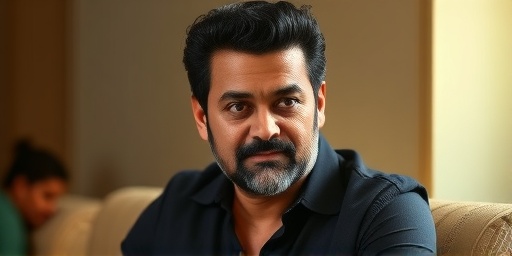In a candid revelation that’s sending ripples through Bollywood, acclaimed actor Jaideep Ahlawat has thrown his weight behind Manoj Bajpayee’s outspoken critique of the glaring pay gap plaguing the Indian film industry. Speaking at a recent virtual panel on entertainment equity, Ahlawat didn’t mince words, affirming that the disparity in remuneration isn’t just an issue—it’s a systemic barrier stifling talent and creativity. ‘Manoj ji has nailed it; the pay gap in Bollywood is real and it’s hurting us all,’ Ahlawat stated, urging senior figures to step up and drive meaningful change.
Ahlawat Amplifies Bajpayee’s Critique of Unequal Salaries
Manoj Bajpayee, known for his powerhouse performances in films like Gangs of Wasseypur and Aligarh, first ignited this conversation last month during an interview with a leading digital platform. He highlighted how top stars command fees upwards of ₹20 crore per film, while supporting actors and newcomers scrape by with fractions of that amount—often less than 5% of the lead’s pay. Bajpayee’s comments struck a chord, exposing the underbelly of Bollywood’s glamour where financial inequities mirror broader industry issues.
Jaideep Ahlawat, whose breakout role in Raazi and subsequent turns in Gehraiyaan and Jaane Jaan have cemented his status as a versatile force, echoed these sentiments with personal anecdotes. ‘I’ve seen incredibly talented colleagues underpaid for their contributions, while the star system dictates who gets the lion’s share,’ Ahlawat shared. His endorsement adds fuel to the fire, as both actors hail from the National School of Drama, representing a generation of performers who prioritize craft over commercial hype.
This alignment isn’t coincidental. Ahlawat and Bajpayee have long been vocal about Bollywood’s challenges, from nepotism to typecasting. By backing Bajpayee, Ahlawat is not just agreeing—he’s amplifying a call to dismantle the pay gap that affects mid-level actors like himself, who often juggle multiple projects to sustain careers. Industry insiders note that this duo’s united front could pressure producers to revisit contract norms, especially as streaming platforms like Netflix and Amazon Prime disrupt traditional hierarchies.
Exposing Bollywood’s Pay Disparity: Numbers That Shock
The pay gap in Bollywood isn’t mere hearsay; it’s backed by stark statistics that paint a troubling picture. According to a 2023 report by the Film Employees Federation of India (FEFI), male leads in big-banner films earn an average of ₹15-25 crore, while female leads and ensemble cast members receive 20-40% less, even in lead roles. For character actors like Ahlawat and Bajpayee, the figure plummets to ₹1-5 crore per project, highlighting a multi-tiered salary structure that favors established A-listers.
Consider the blockbuster Pathaan (2023), where Shah Rukh Khan reportedly pocketed ₹100 crore, while supporting actors earned under ₹2 crore. This disparity extends beyond gender; it’s exacerbated by experience and marketability. A study by Media & Entertainment Skills Council revealed that 70% of Bollywood’s workforce— including writers, technicians, and junior artists—earns below ₹50,000 per month, fueling turnover and burnout.
Ahlawat delved into these figures during the panel, quoting, ‘When Manoj Bajpayee speaks of earning one-tenth of what a hero does for similar screen time, it’s not exaggeration—it’s our reality.’ Bajpayee himself recounted in his original interview how he negotiated for fair pay in The Family Man, only to face resistance from producers citing ‘star value.’ Such stories underscore industry issues like opaque negotiation processes and the dominance of a few agencies that control talent deals.
Moreover, the pay gap intersects with regional cinema’s influence. South Indian stars like Rajinikanth command pan-India fees that dwarf Bollywood counterparts, yet when Hindi remakes occur, the inequities persist. Ahlawat pointed out that this not only demotivates talent but also stifles innovation, as underpaid actors take on safer, less challenging roles to ensure financial stability.
Senior Industry Figures Urged to Lead Pay Equity Reforms
Ahlawat’s plea for change zeroed in on Bollywood’s veteran leaders—producers like Karan Johar, directors like Sanjay Leela Bhansali, and actors like Amitabh Bachchan—as the key to unlocking progress. ‘It’s time for the seniors to set examples by advocating transparent pay scales and profit-sharing models,’ he asserted, directly referencing Bajpayee’s call for collective bargaining among actors.
Bajpayee had previously suggested forming guilds similar to Hollywood’s SAG-AFTRA, which enforces minimum wages and residuals. In India, the Cine and TV Artistes’ Association (CINTAA) exists but lacks teeth, with only 15% of members reporting fair pay audits. Ahlawat expanded on this, sharing how his own career trajectory—from theatre to OTT—exposed him to varied pay structures. ‘In web series, there’s more equity because platforms value content over stardom, but films lag behind,’ he noted.
Recent precedents offer hope. The #MeToo movement in 2018 prompted some studios to adopt better HR practices, and now, pay parity is the next frontier. Actresses like Vidya Balan and Taapsee Pannu have long championed gender pay gaps, with Balan revealing she earned 10% of her male co-star’s fee in a 2010s project. Ahlawat’s support bridges the male perspective, emphasizing that industry issues affect everyone, regardless of gender.
Producers’ responses have been mixed. Aditya Chopra of Yash Raj Films has publicly committed to reviewing salaries post-Pathaan‘s success, but critics argue it’s performative. Ahlawat warned that without action from the top, the talent exodus to regional or international projects will accelerate, citing Irrfan Khan’s global pivot as a cautionary tale.
Navigating Career Hurdles Amid Bollywood’s Financial Inequities
For emerging talents, the pay gap translates to tangible career obstacles. Jaideep Ahlawat recounted his early struggles, where roles in Talvar and Uri paid modestly despite critical acclaim, forcing him to balance passion with practicality. ‘Manoj Bajpayee’s journey mirrors mine—we grind for recognition, but the rewards are uneven,’ he said, highlighting how this discourages diversity in storytelling.
Statistics from a 2022 PwC India report show that 60% of aspiring actors abandon the industry within five years due to financial strain, exacerbating Bollywood’s reliance on star kids who inherit lucrative deals. Bajpayee, an outsider himself, has mentored newcomers through his production house, but he stresses systemic change over individual aid.
Ahlawat advocated for mentorship programs tied to fair pay, drawing from his experience in Sacred Games, where Netflix’s model ensured better residuals. He also touched on the post-pandemic shift: OTT boom has equalized opportunities somewhat, with shows like Paatal Lok (starring Bajpayee) proving content-driven success. Yet, theatrical releases remain a battleground, where budgets prioritize marketing over equitable casts.
Personal stories abound. Pankaj Tripathi, another NSD alum, once shared earning ₹3 lakh for a film where the lead took ₹12 crore. Ahlawat used this to illustrate how the pay gap fosters resentment, potentially harming collaborations. To counter this, he proposed incentives like backend profits for all contributors, a model gaining traction in Hollywood crossovers like RRR‘s Oscar buzz.
The emotional toll is profound. Actors face anxiety over finances, leading to typecasting or overwork. Ahlawat’s narrative resonates with fans, humanizing the stars and underscoring that behind the red carpets lies a fight for dignity.
Charting a Fairer Future: Steps Toward Bollywood Pay Parity
As Jaideep Ahlawat and Manoj Bajpayee’s voices gain momentum, the path forward involves multi-stakeholder action. Ahlawat envisions workshops hosted by the Producers Guild to standardize contracts, incorporating clauses for pay audits and escalation based on box-office performance. Bajpayee has already rallied support from peers like Nawazuddin Siddiqui, forming an informal alliance to negotiate with streaming giants.
Government intervention could play a role too. The Ministry of Information and Broadcasting’s recent push for film policy reforms includes equity provisions, potentially mandating 30% budget allocation for supporting talent. International examples, like the UK’s BFI diversity standards, offer blueprints—Bollywood could adapt them to address its unique star system.
Looking ahead, Ahlawat predicts a tipping point by 2025, driven by Gen Z audiences demanding ethical content. Projects like Jaane Jaan, where he earned commendably for his nuanced role, signal progress. Yet, challenges persist: the allure of big paydays tempts compromise, and global recessions could tighten budgets further.
Ultimately, Ahlawat’s backing of Bajpayee isn’t just solidarity—it’s a blueprint for transformation. If senior figures heed the call, Bollywood could evolve into a more inclusive arena, where talent, not fame, dictates worth. As the industry eyes its next chapter, these conversations promise to reshape not just paychecks, but the very narrative of Indian cinema.









